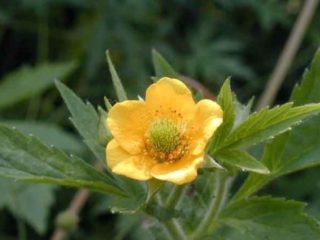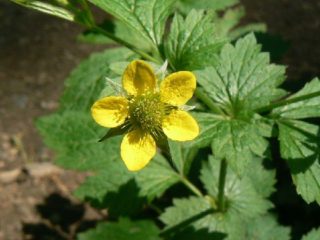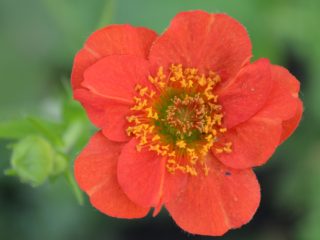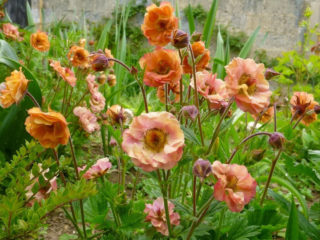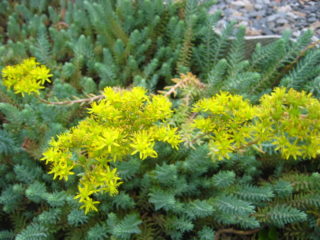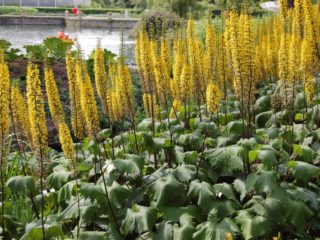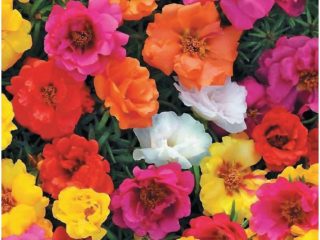Content
- 1 Botanical description
- 2 Types and varieties
- 3 Gravilat in landscape design
- 4 Breeding features
- 5 Growing gravilat from seeds
- 6 Planting and caring for the gravilat
- 7 Diseases and pests
- 8 Medicinal properties and contraindications of gravilat
- 9 Conclusion
Gravilat is a herb for open ground. Many of its species are used for decorative breeding. Perennials can be propagated in different ways, planted with seeds or seedlings.
Botanical description
Gravilat is a whole genus of herbaceous perennials belonging to the Pink family. Its main characteristics:
- the height of most varieties is up to 0.6 m;
- stems are straight;
- large basal leaves, pinnate-lobed or pinnately dissected;
- the color of the flowers is white, yellow or pink, they are wide open, they can be bell-shaped or looking up;
- almost sessile stem and small whole apical leaves;
- inflorescences are paniculate or umbellate, with 3-10 buds, some species have single flowers;
- pollination is provided by insects;
- flowering occurs in late spring or early summer;
- the fruit is a multi-nut;
- the seeds are easily separated from the flowers, have a tail and a curved hook at the end.
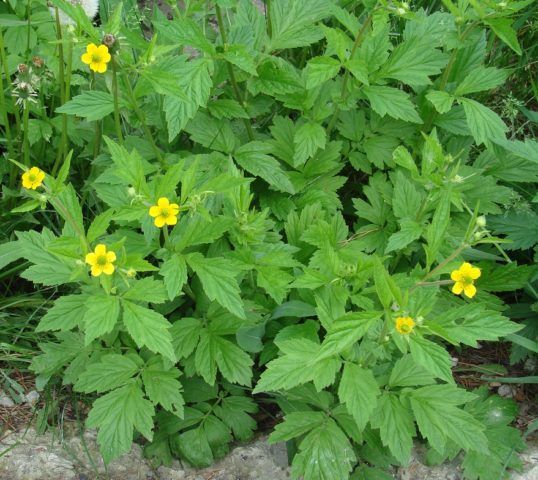
Aleppo gravilate (straight) is also called the clove root, since its roots can replace cloves
Where does the gravilat plant grow?
Gravilat is not found on the planet only on one continent - in Antarctica. In nature, the plant is common in areas with a temperate climate. Perennial prefers meadows, but also occurs in forests.
Types and varieties
The description and photo of the gravilat flower depends on its type. There are about 50 of them.
Tame Gravilat
Tame gravilate (lat.Geum rivale) is also called stream or river. The main characteristics of the plant:
- habitat - North America, all of Europe, China and Central Asia, the European part of Russia, the Caucasus, the Far East, Western and Eastern Siberia;
- preferred places - moist and damp fertile soil with a slightly acidic reaction, river banks and the edges of swamps, meadows, deciduous forests, shrub thickets;
- height up to 0.8 m;
- stem erect and hairy, dark red, can branch slightly, glandular at the top;
- pressed-shaggy leaves;
- bell-shaped bisexual flowers with a brownish-red calyx and wide petals, up to 1.5 cm in diameter;
- the flowering of the plant lasts 2-3 weeks, falls on the end of spring and the first half of summer;
- many hairy stamens and pistils forming an ovoid head;
- the fruit is a red achene with a hook at the end, allowing distribution to humans and animals;
- ripening of fruits occurs in July-August.
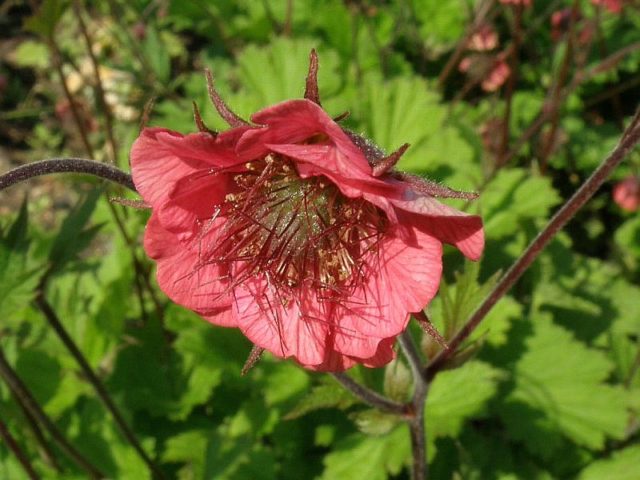
Gravilat is listed in the Red Data Books of the Saratov and Irkutsk regions in Russia and the Kharkov region in Ukraine
In ornamental horticulture, a specially bred gravilata variety Leonardo Var (Leonardo Var) is used.It has large flowers with a diameter of 3-4 cm, the height of reddish-brown stems up to 0.45 m.
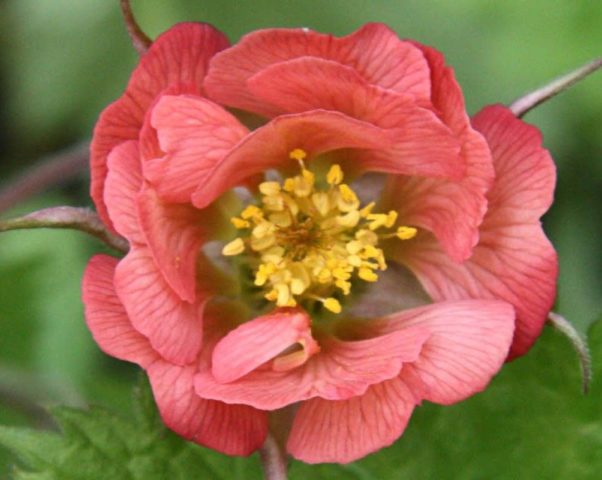
The flowers of the Leonardo Var variety have a copper-pink color
In spring, the tame gravilat serves as a good feed for cattle. The plant is a honey plant.
Gravilat bright red
Bright red gravilate (lat.Geum coccineum) is naturally distributed in Western Asia and Southeast Europe. Its main characteristics:
- plant height during flowering up to 0.4-0.5 m;
- straight stems with pubescence;
- flower diameter 3-3.5 cm;
- bright orange color;
- flowering lasts 30-40 days, begins at the end of May.
A popular variety of the species is Borizin (Borisii). This orange gravilat has good winter hardiness - it can withstand up to - 23 ° C.

Borizin blooms in June-September
Urban
Urban gravilate (lat.Geum urbanum) is also called the clove root. The Russians in common parlance call him the undergrowth, and the Ukrainians call him a vyvishnik. In nature, it is widespread:
- the whole territory of Europe;
- north of Africa;
- Caucasus;
- Asia Minor and Central;
- Russia - the European part, Western Siberia, Ciscaucasia.
This species prefers gardens and parks, forest edges, roadsides, wastelands. It can often be found in spruce or alder forests.
The main characteristics of the city gravilat:
- height 0.3-0.6 m;
- erect stem with soft pubescence, white hairs above, weakly branches;
- the rhizome is thick and oblique, usually unbranched;
- in the basal rosette there are 3-9 leaves, they are round-ovate and unevenly toothed;
- few stem leaves, on both sides of the plate cover a few hairs and glands on the legs;
- diameter of single flowers 1-1.5 cm, yellow color;
- the spread of plant seeds is provided by humans and animals.
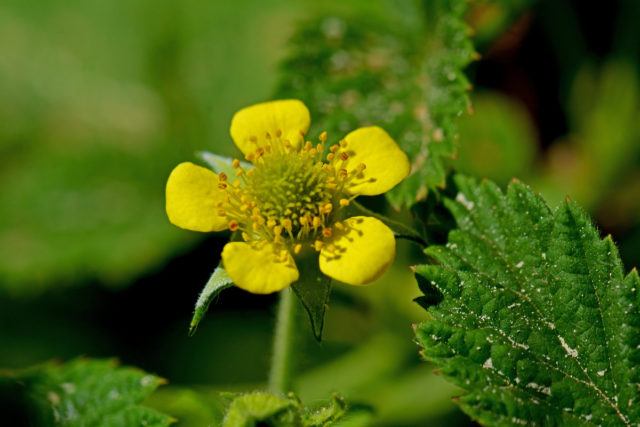
Urban gravilata bloom in May-September, in the European part of Russia it lasts until July
The plant is called the clove root for the characteristic aroma obtained by the oil obtained from dry rhizomes. This perennial has medicinal properties, which were mentioned by Hippocrates.
Gravilat urban is a honey plant and an insecticide. Its roots can be used to obtain reddish-brown and black dyes, as well as tanning leather, and it adds an additional clove scent.
The plant is also used in cooking. Its roots serve as a good seasoning for vegetables. It is also used in the manufacture of canned food and confectionery, brewing and alcoholic beverage industry. Fresh young leaves of the plant can be added to salad.
Chilean
Chilean gravilat (lat.Geum quellyon) is bred in gardens as an ornamental plant, has been cultivated for almost 2 centuries and has been successfully used for hybridization. In nature, perennial is common in Chile. Its main characteristics:
- height up to 0.6 m;
- unpaired leaves in a basal rosette;
- flowers are red, up to 3 cm in diameter;
- paniculate inflorescence;
- flowering occurs in May-August, the specific dates depend on the variety;
- winter hardiness is good.
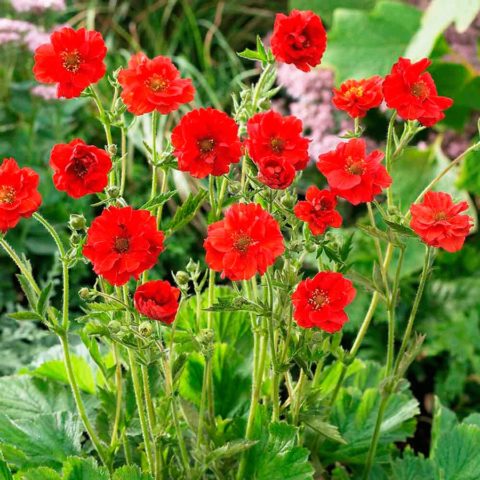
Chilean gravilata bloom lasts 50 days
The plant is widely used by the Mapuche Indians in folk medicine. They treat toothache, prostatitis and stomach inflammation, normalize menstruation. An extract with antioxidant, anti-inflammatory and antitumor properties is obtained from the roots.
Hybrid gravilat
The hybrid gravilat (lat.Geum hybridum) includes forms and varieties that are obtained by crossing other species. Its main characteristics:
- height up to 0.25 m, during flowering - up to 0.6 m;
- flowers up to 3 cm in diameter, can be yellow, orange or red;
- wrinkled lyre leaves;
- flowers are solitary or form corymbose or paniculate inflorescences.
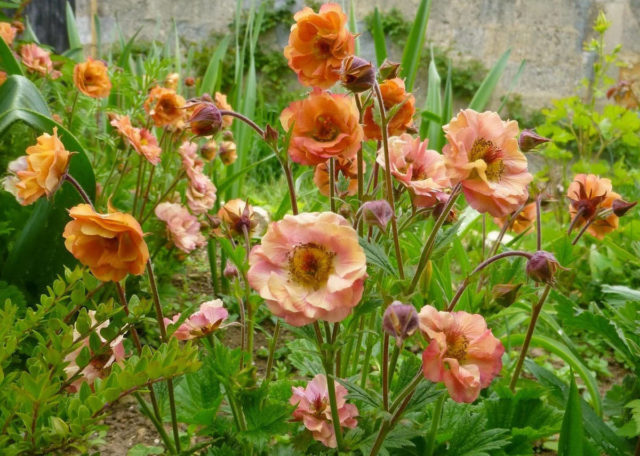
Hybrid gravilata bloom in July-August.
Mountain
Mountain gravilat (lat.Geum montanum) is distributed in the center and south of Europe. The Austrians used it in folk medicine for infections, fever, rheumatism, gout.
This species grows in the mountains at an altitude of 1-3 km. The main characteristics of a perennial:
- compact bush or growing turf;
- height during flowering up to 0.3 m;
- stem erect or ascending, thick;
- basal leaves are lyre-pinnate, petioles are short;
- a small number of small stem leaves;
- diameter of flowers 3-4.5 cm, petals are longer than sepals;
- the color is golden yellow;
- flowering occurs in May-July.
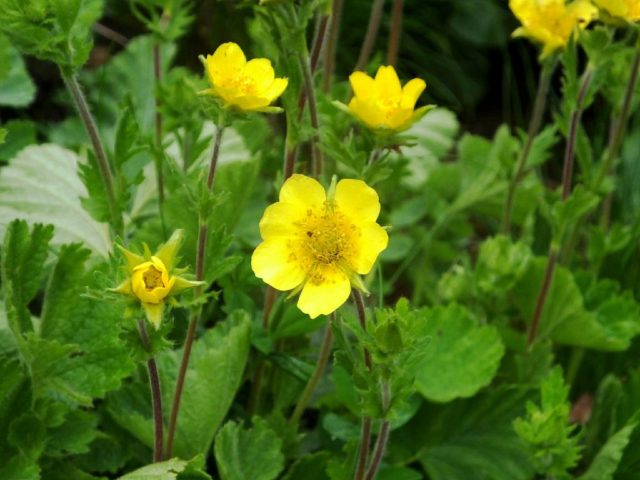
Gravilat mountain tolerates cold well, although it is a sun-loving plant
Gravilat Ross
The homeland of the gravilat Ross (lat.Geum rossii) is North America. It is distributed mainly in Northern Canada and the high mountains in the western United States. The main characteristics of a perennial:
- dense bushes up to 0.3 m wide;
- flowering begins in mid-June;
- the color is yellow;
- flowers are small.
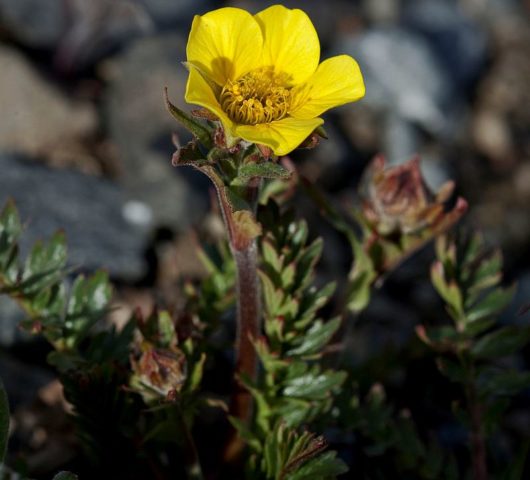
Gravilat Ross has good winter hardiness - it can withstand up to - 35 ° C
Gravilat Triflorum
The homeland of the gravilat Triflorum (lat.Geum triflorum) is North America. In nature, it is found from the eastern regions to New York and from the north of Canada to California.
The main characteristics of a perennial are:
- reddish-purple stems 0.15-0.4 m high;
- flowering begins in mid-spring and lasts until early summer;
- umbellate inflorescences with 3-5 buds;
- 5 purple or deep pink petals with a cream or yellowish tint;
- only pollinated buds open and turn upwards.
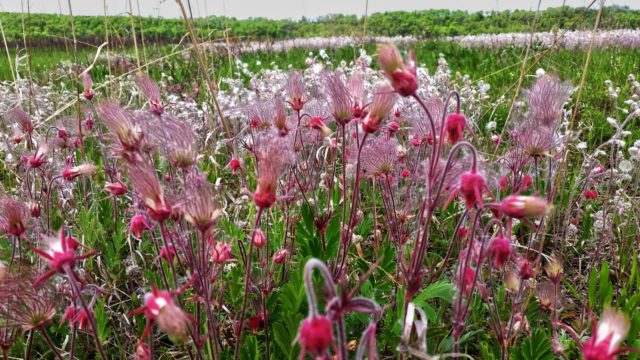
Because of the upward long hairs of the seeds, Americans call this species prairie smoke.
Gravilat Triflorum is a honey plant. Its flowers attract mainly bumblebees, which are able to get to nectar even in closed buds. Bumblebees are effective cross-pollinators for this perennial species.
The best varieties
There are many varieties of gravilat of different types. Among them, some are especially popular in gardening.
Rigoletto
Rigoletto (Rigoletto) - a variety of the Chilean gravilata. Main characteristics:
- erect stem;
- height up to 0.6 m;
- double flowers of scarlet color, up to 4 cm in diameter;
- paniculate inflorescences;
- basal rosette with bright green carved and wrinkled leaves;
- buds bloom alternately, flowering occurs in June-July.
For growing Rigoletto gravilata from seed, a well-drained soil is essential. The place should be well lit.
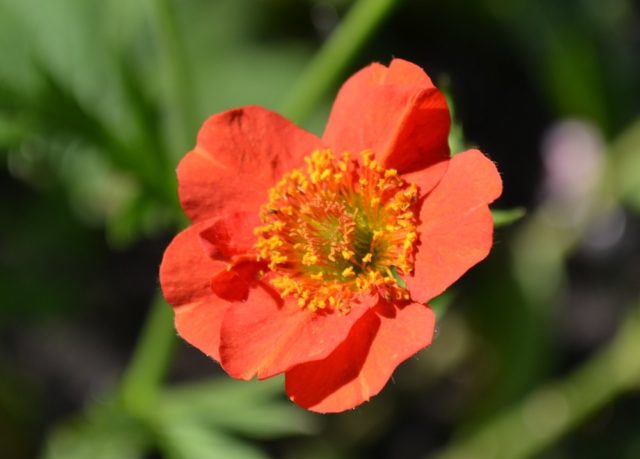
The decorativeness of the Rigoletto gravilat is preserved throughout the season.
Aurelia
Aurelia (Aurelia) is another variety of the Chilean gravilata. Characteristics of this perennial:
- height up to 0.6 m;
- the diameter of the double flowers is 3-4 cm;
- the stem is straight, the pubescence is small;
- bright golden yellow color;
- flowering begins at the end of June, lasts an average of 50 days.
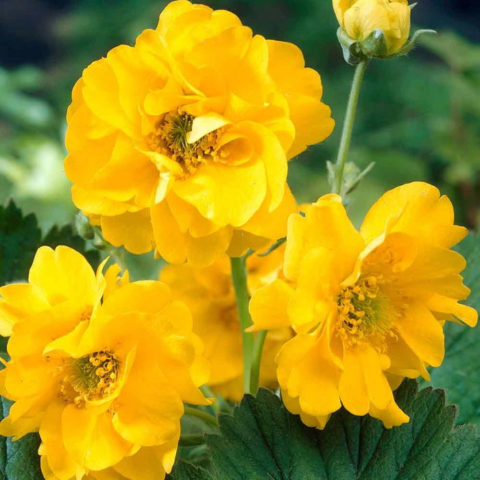
Seedlings of gravilata Aurelia begin to bloom for 2 years
Tinkerbell
Tinkerbell is another grade of the Chilean gravilata. Outwardly, it resembles another grade of gravilata Lady Strafden (Lady Stratheden).
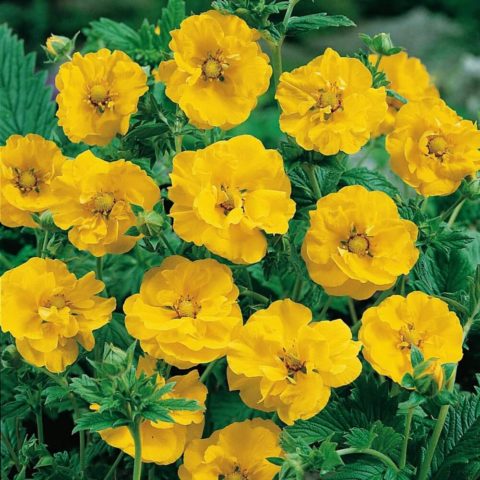
Tinkerbell has golden yellow flowers with a diameter of 4 cm, collected in panicles
Mai Tai
Mai Tai is a hybrid variety. It has burgundy stems 0.45 m high and semi-double flowers 3.5 cm in diameter.
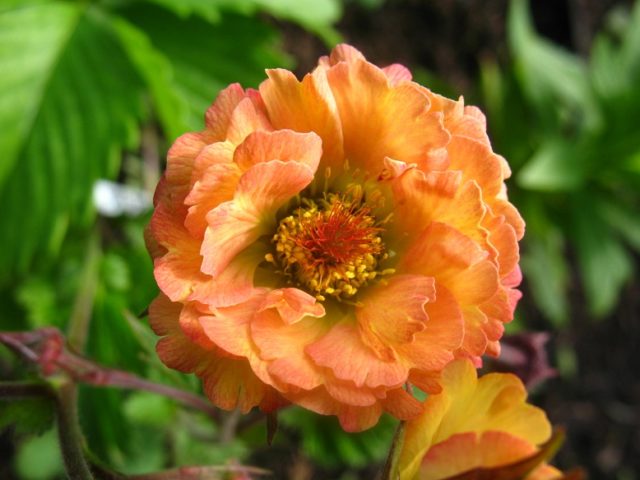
The flowers of the gravilata Mai Tai have a pale apricot color with a pink blush.
Blazing Sunset
Blazing Sunset is Chilean. During flowering, it looks very impressive. The main characteristics of the variety are as follows:
- height up to 0.6 m;
- bright red double flowers, up to 3 cm in diameter;
- basal rosette with green pinnate leaves;
- flowering occurs in July-August.
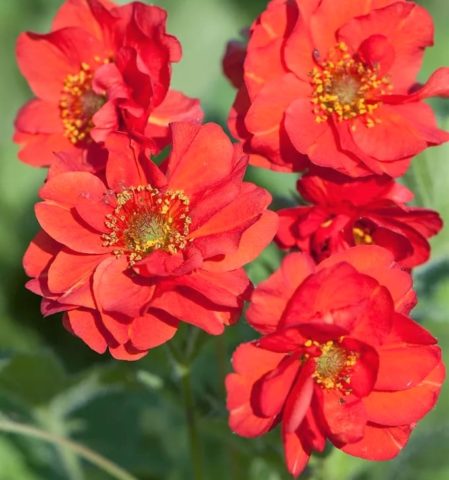
The flowering of this variety is abundant and long
Moon
The Luna variety belongs to the Chilean gravilat and owes its name to its golden yellow color. Characteristics:
- the diameter of the double flowers is 3-4 cm;
- stem height up to 0.6 m;
- panicle inflorescence;
- leaves are pinnate, form a basal rosette.
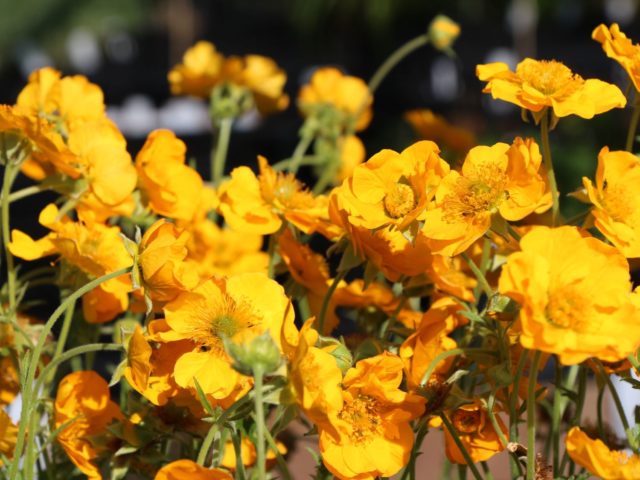
The flowering of the gravilata Moon begins in June and lasts a month
Totali Tangerine
Totally Tangerine is a hybrid variety. Characteristics:
- bush height 0.35-0.5 m. width 0.4 m;
- flowers 3-4 cm in diameter, tangerine or apricot color;
- dark green foliage;
- peduncle height 0.75-0.8 m;
- climatic zone 5-7, according to other sources 4;
- the flowers are sterile, their number is several times greater than that of a typical gravilat.
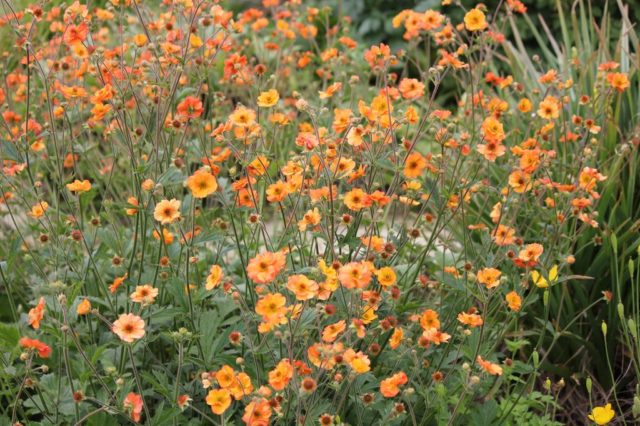
Totali Tangerine blooms in May-September and lasts for several months.
Flames of Passion
One of the varieties of the Chilean gravilat is Flames of Passion. It forms compact bushes with the following characteristics:
- height up to 0.4 m;
- double flowers of a red-cherry shade, up to 4 cm in diameter;
- contrasting yellow anthers;
- erect wine-red stems;
- dark green foliage;
- frost resistance zone 4.
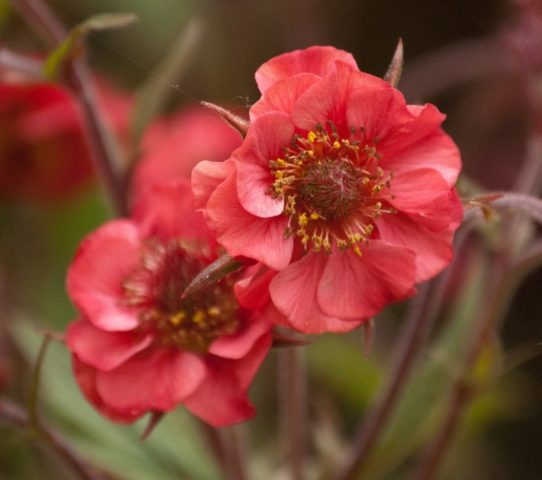
Flowering of Flames of Passion is long lasting and falls in June-August
Mrs Bradshaw
Mrs Bradshaw is a Chilean gravel. It grows up to 0.4-0.6 m, has elegant foliage and many scarlet semi-double and double flowers. Their diameter is 3-4 cm.
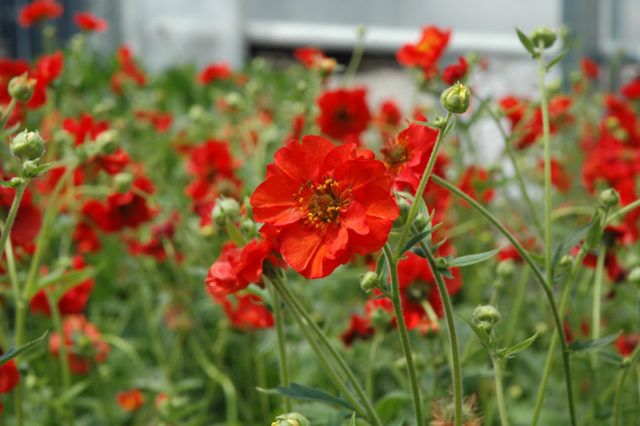
Mrs Bradshaw blooms in June-August
Tequila Sunrise
The gravillat Tequila Sunrise has an unusual color. Its simple and semi-double flowers have a yellow base tone, red spots are unevenly distributed on it. They have different sizes and shade intensities.
This variety has abundant flowering. It falls in April-September. Dark red peduncles grow up to 0.55 m, and hairy lobed leaves up to 0.3 m.
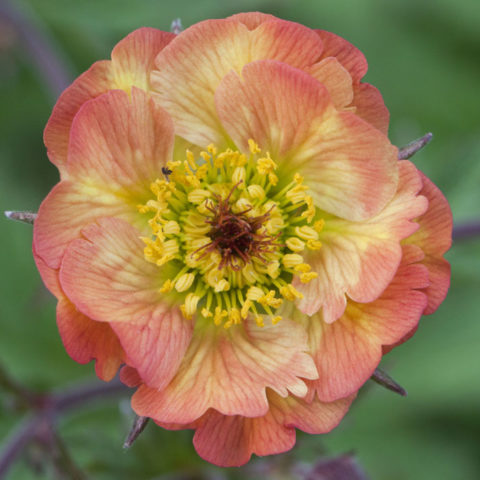
Tequila Sunrise is good for cutting
Sparkling sunset
The Sparkling Sunset variety has a spectacular leaf rosette and bright carmine flowers. The main characteristics of a perennial are:
- height up to 0.6 m, width up to 0.4 m;
- flowering begins 1 year after sowing;
- frost resistance up to - 27 ° C.
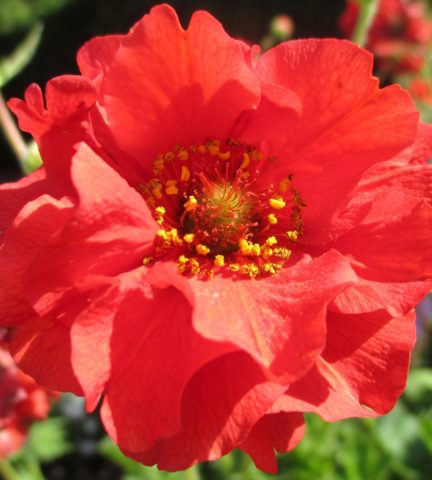
The sparkling sunset variety is recommended for the Moscow region, the Urals, and the southern regions.
Cosmopolitan
Gravilat Cosmopolitan is another variety with an original color. The main shade is transparent cream, and the petals are pink at the edges. The flowers of this variety are semi-double, the peduncles grow up to 0.6 m.
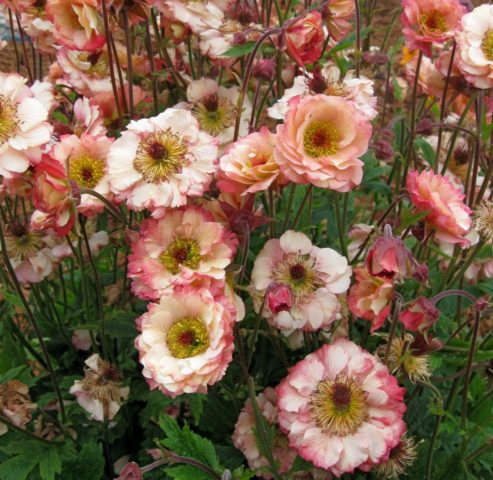
Half-open flowers of Gravilata Cosmopolitan resemble small roses
Fire storm
The variety Fire Storm is also called Firestorm. Characteristics:
- semi-double orange flowers;
- height 0.35-0.5 m, width 0.45 m;
- flowering begins in late June and lasts until mid-September.

Gravilat Firestorm is well suited for alpine slides
Gravilat in landscape design
In landscape design, less than half of the gravilat types are used. It attracts with long flowering, after which the decorative effect is preserved due to the beautiful carved foliage.
Gravilat in a flowerbed can be combined with different flowering and green species:
- carnations;
- bells;
- peonies;
- phlox.
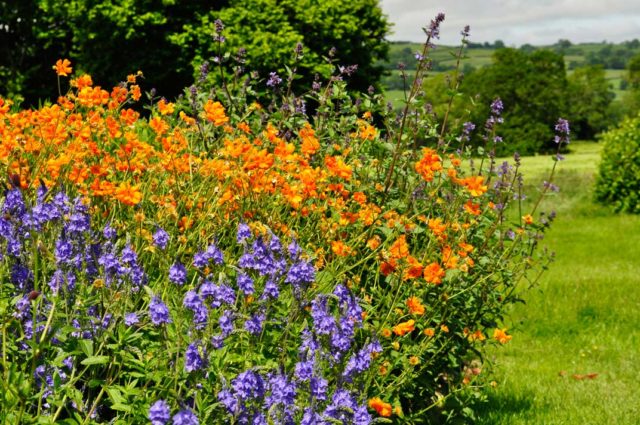
Bright gravillat creates a beautiful contrast with Veronica of Austria
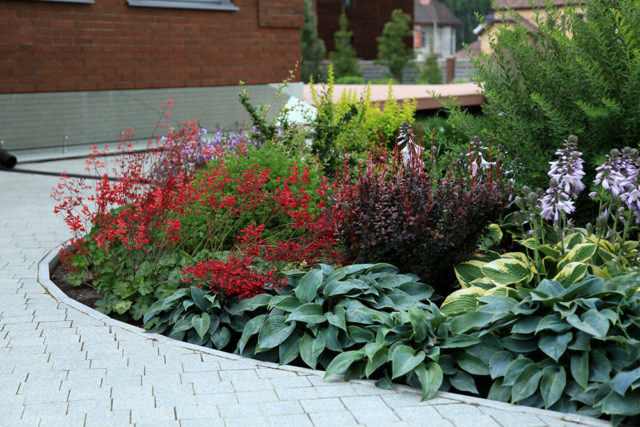
On the flowerbed, gravilat perfectly coexists with hosts and barberry
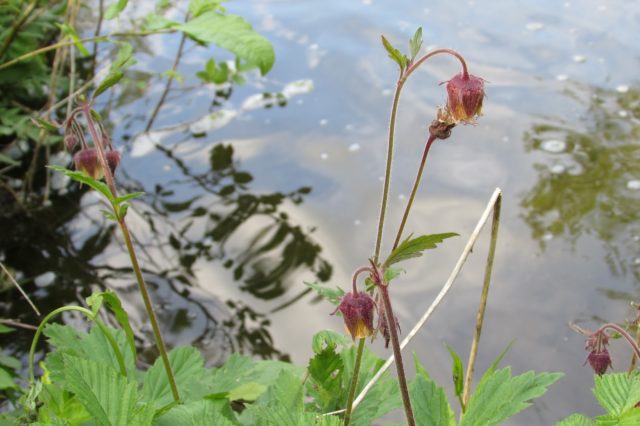
It is good to plant gravilatus near natural or artificial reservoirs.
In the photo of gravilat flowers, you can often find him among the stones, where he feels great. The plant is well suited for creating rock gardens and rockeries.
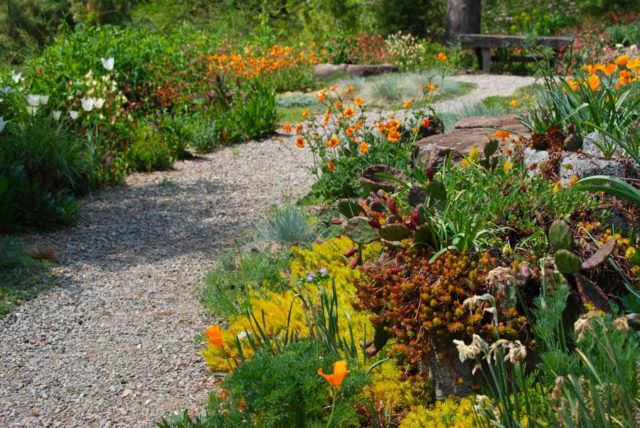
Gravilat is good for planting along paths, combining with other flowers and green plants
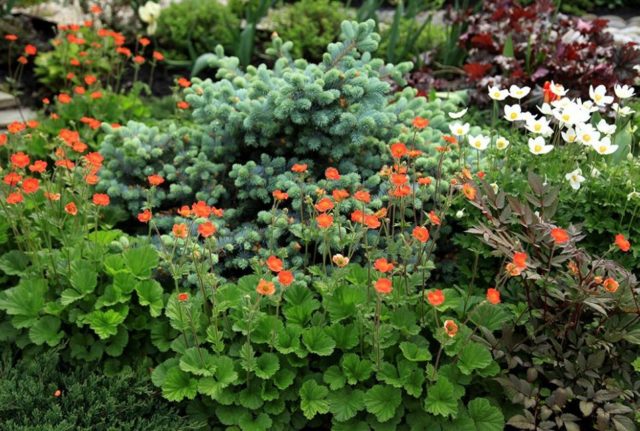
Gravilat is originally set off by conifers
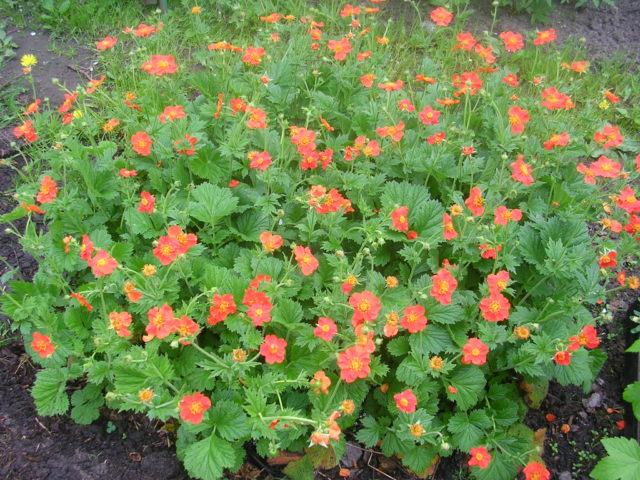
Gravilat looks good in a group planting
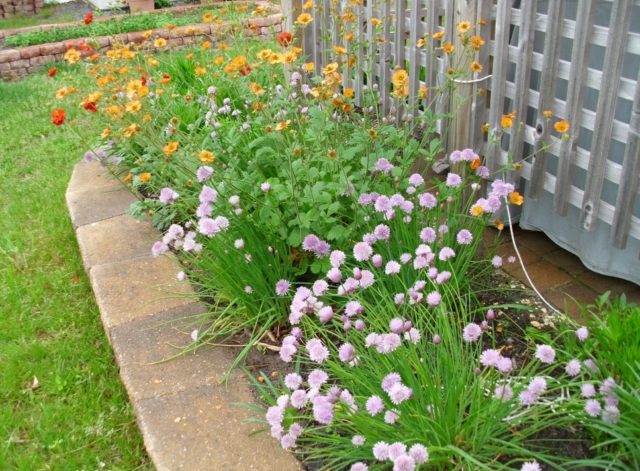
For a linear planting, it is better to use gravilat of different shades, you can combine it with other colors
Breeding features
Gravilat is grown from seeds or propagated by dividing the bush. It is better to do this in the spring, although in areas with a warm climate it is allowed to carry out work in the fall, but after the seeds have fully ripened.
It is necessary to divide the perennial bush so that each plot is with a part of the rhizome, live buds and stems with leaves. It is necessary to plant the separated elements at intervals of 20 cm. If the bushes take root quickly, they will bloom in the first year. When dividing in the fall, the buds will only appear next spring.
Growing gravilat from seeds
Gravilat is grown from seeds in two ways. You can do this through seedlings or sow the material directly into open ground.
Direct sowing in the ground
If you plant gravilat seeds directly into the ground, then the process can be greatly simplified. The plant is unpretentious, because its germination is good.
Growing seedlings
It is not difficult to grow gravilat with seedlings. Process algorithm:
- Prepare a container or box, be sure to have drainage holes.
- Fill the container with nutritious soil, make grooves at intervals of 5 cm. Deepen a maximum of 2 cm.
- Spread the seeds along the grooves at intervals of 3 cm.
- Cover crops with earth
- Provide a cover of film or glass.
Air planting every day. Moisten the soil periodically with a spray bottle.
The shelter must be removed after the sprouts appear. Care consists in regular hydration. After the appearance of the first pair of leaves of the plant, you need to dive, moving them with an earthen lump. To stimulate the growth and development of a perennial in a week, top dressing is needed. Complex formulations are suitable for garden flowers.
Planting and caring for the gravilat
For the successful cultivation of perennial gravilata, planting and care must be carried out according to certain rules. It is necessary to choose a suitable place, meet the deadlines, water the plant in a timely manner and prepare it for winter.
Recommended timing
The timing of planting the gravilat depends on the chosen method. In open ground, seeds should be sown in early spring, as soon as the soil warms up. Seedlings are planted outdoors in the second half of May or early June.
It is also possible podzimny sowing of seeds, in which they undergo natural stratification. It is better to plant the material in October, when the cold comes. No insulation is required for the winter. Seedlings will appear in the spring when it gets warm.
Site selection and preparation
Gravilat is unpretentious, but for good growth and development, the plant should provide certain conditions:
- loose, well-drained and aerated soil;
- more than half of the soil should be sand;
- well-lit place, light partial shade is allowed;
Site preparation for planting consists in digging, sanding and removing weeds. The earth must be loosened.
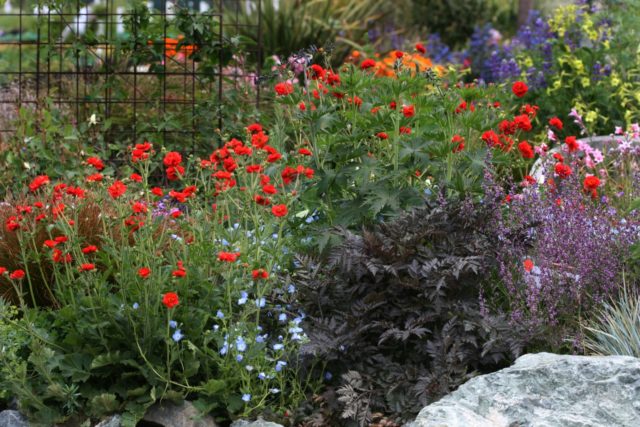
If the acidity of the soil is increased, then wood ash should be added before planting.
Landing algorithm
The features of the process depend on the chosen method. With direct sowing of perennial seeds, they act as follows:
- Prepare the site, loosen and level the ground. There should be no lumps.
- Make grooves at 15 cm intervals.
- Distribute seeds in rows, sprinkle on them.
- Moisten the fit. It cannot be poured, otherwise a crust will form on the surface.
In hot dry weather, crops should be watered a little every day. After emergence, thinning is necessary. 5-7 cm should remain between the shoots. Seedlings that have grown to 15 cm are transplanted with an interval of 40 cm.
When planting seedlings, the site must be prepared according to the standard algorithm. Bushes are placed at intervals of 20 cm.
Watering and feeding schedule
Gravilat is drought-resistant, but it cannot be left completely without watering.On hot and dry days, it should be regular and abundant. The same measures are applied if the plant has been left without water for a long time. You can not fill the plantings, otherwise rotting will begin.
It is enough to feed a perennial 4 times per season. In spring and autumn, the plant needs organic matter, it responds well to humus.
Before flowering, granular mineral fertilizers are used; the potassium-phosphorus combination should prevail in them. The same plant feeding is carried out in mid-July.
Preparing for winter
The peculiarities of preparing a plant for winter depends on the frost resistance of a particular variety. If the temperature does not drop below - 15-20 ° C, then no measures are required.
If the region has cold winters, then in the fall you need to cut off the entire aerial part of the perennial, and cover the roots with mulch.
Transplant features
It is recommended to replant Gravilat every 4-5 years. More often this is not necessary, since the plant reacts poorly to such changes. Effectively combining a perennial transplant with its division.
Diseases and pests
Gravilat is resistant to pests, but can be affected by spider mites. Moisture deficiency can provoke this. To combat the pest, plants use acaricides - Aktara, Aktellik, Iskra, Fitoverm, Fufanon.
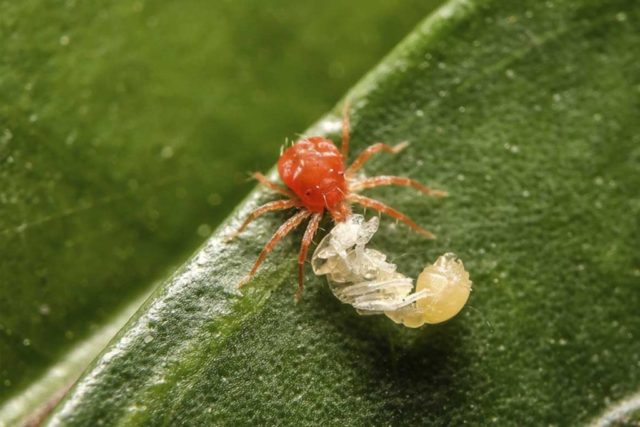
The spider mite feeds on plant juices, leading to drying and death of leaves
Perennials can suffer from rot. In case of severe damage, the plants are destroyed by the roots. For the treatment of perennials, fungicides such as Fundazol, Skor, Impact, Quadris, Topaz are used.
Rot can provoke over-watering of plants. To prevent this trouble will turn out by mulching.
Medicinal properties and contraindications of gravilat
Different parts of the perennial have healing properties. Decoctions, infusions, powders are prepared from them. Such herbal remedies help with various problems due to the medicinal properties:
- anti-inflammatory;
- wound healing;
- antineoplastic;
- antiseptic;
- diaphoretic;
- tonic;
- hemostatic;
- increased potency.
The plant is used for diseases of the gastrointestinal tract, kidneys and liver, oral cavity, rheumatism. A decoction of aerial parts and rhizomes is able to cure cough, cholecystitis, colitis, gastritis.
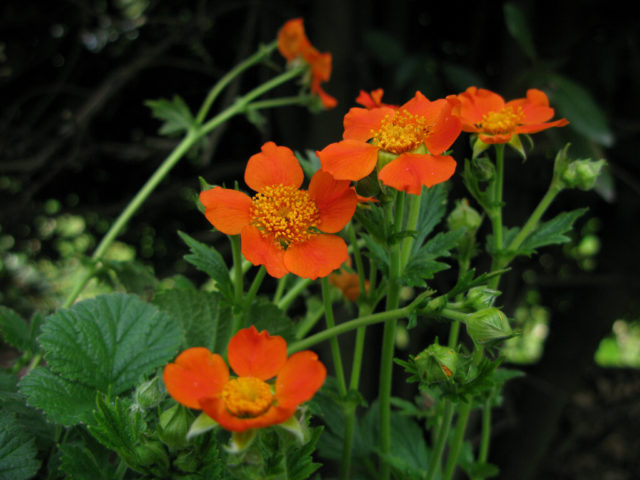
In folk medicine, there are remedies from gravilat for both internal and external use.
The composition and value of the plant
The chemical composition of gravilat depends on its specific type and grade. The roots and rhizomes of the plant are especially rich in various elements. They are especially valuable:
- tannins;
- essential oil with eugenol, glycosides, resins, starch, bitter substances.
Young leaves of the plant are saturated with ascorbic acid, carotene and tannins. The seeds can contain up to 20% fatty oil.
Application features
Gravilat is used in folk medicine, cosmetology, and the food industry. Each area has its own characteristics.
In folk medicine
Many peoples of the territories where gravilat grows in nature use it for medicinal purposes. A universal decoction can be prepared from its dry roots:
- Grind raw materials.
- Pour 1 tbsp. l. a glass of water, keep on low heat for 15 minutes, covered.
- Insist broth for 5-10 minutes, drain.
Such a remedy is effective for various diseases. Inside it is taken in 1-2 tbsp. l., externally for rinsing.
In cosmetology
The healing properties of the plant have found their application in cosmetology:
- to normalize sweating and improve the condition of the skin, baths with a decoction of the herb are effective;
- tough and old calluses are well removed with plant juice;
- for oily skin, a mask of gravilat infusion (1 tsp for 0.5 l of water, keep for 30 minutes) and starch (2 tbsp) is useful, the mixed ingredients insist for 15 minutes and apply for half an hour.
Collection and procurement of raw materials
The gravilata herb is harvested at the beginning of flowering, and the rhizomes are harvested in early spring or autumn. You need to prepare the material like this:
- Arrange the raw materials in one layer.
- Dry in a ventilated area or in a special dryer. Maximum temperature 45 ° C.
- Place dry raw materials in an airtight container.
The herb can be stored for 1 year, the rhizomes are three times longer.
Conclusion
Gravilat is a herb for open ground. Many of its species can be used in landscape design; it is not difficult to grow a perennial. The healing properties of the plant have found application in folk medicine and cosmetology.
